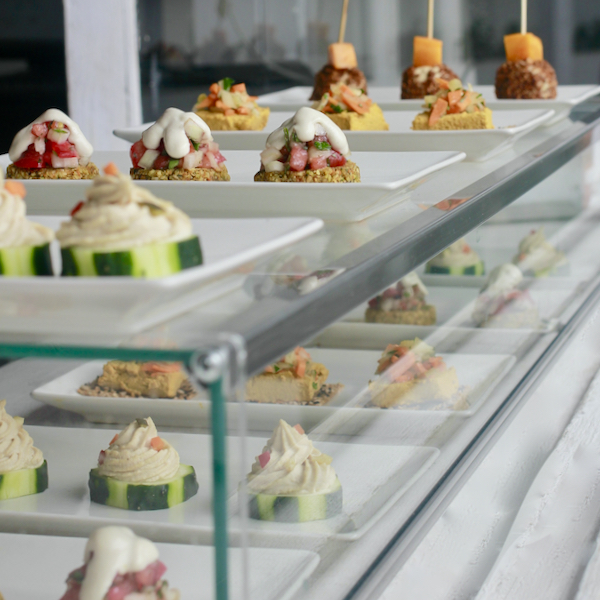
A key principle of Zen Cooking is to aim at kitchen practices with Zero Waste. In Zen recipes we usually find techniques to use all parts of vegetables including roots, leaves and peels. Mushrooms and seaweeds are first used to flavor broths and then to make pickles or purees.
This is interesting as in today’s contemporary cooking this concept is called Upcycling (transforming an ingredient leftover in a new dish). Today we are going to see an ancient technique of upcycling used to make Kombu Onigiri (traditional Japanese rice cakes). Kombu seaweed is used to flavour the rice and, once cooked, transformed into Tsukudani (a type of preserve) with which we will fill and decorate the onigiri. The resulting snack is a classic dish, amazing for its simplicity and harmony of flavors.

Kombu seaweed (from Japanese 昆布 ) is a seaweed of the Laminaria family. There are about 18 varieties of edible Laminaria. The most common are Laminaria digitata (Atlantic Kombu) and Saccharina japonica (Asian Kombu). They are sold dehydrated, in sheets like the ones in the photo. The first step when working with Kombu is to rehydrate it in mineral water for 15-20 minutes. In this way, we lower its iodine levels and give it a milder and more aromatic flavor.

Kombu sheet before and after being rehydrated
In our onigiri, we are going to use the kombu first to flavor the rice and then to make a traditional marinade or Tsukudani with which we will fill the rice balls. In the recipe (below) you can see the Japanese technique for cooking rice together with Kombu. The Kombu sheet, once cooked, is cut into very thin strips and cooked in a mild marinade resulting in a glossy seaweed preserve with a pleasant marine flavor.

Kombu Tsukudani
In this way, kombu becomes a treasure in the pantry. It is an extraordinary food, it can be stored for months, and it is used with zero waste. Appreciation for food is a central practice in Zen Cooking. This appreciation leads to avoiding waste and is part of a reflection on the value of food. Our piece of kombu was part of an underwater forest, it has been harvested by hand and dried in the sun. This knowledge helps us to be more careful and treat seaweed coming back to life in our kitchen with due respect.

Underwater forest with Laminaria (Kombu) y Alaria (Wakame) seaweeds
Kombu Onigiri are received like a feast for their attractive shape and color combination. They are savory cakes where the rice mild background combines with the marine flavors of the nori seaweed and the kombu filling. A sea flavor packed dish with touches of sesame and the power of tamari. A plate of onigiris is a festival of visual and flavor harmony. Do make your own onigiris!
And if you don’t want to miss a single detail, we have selected this great video where you can see how to shape your onigiri step by step:
- 250 gr short grain rice
- 1 or 2 kombu sheets (10-15 gr total)
- 250 ml mineral water
- 1 tablespoon sake
- 1 teaspoon rice vinegar
- 1 tablespoon panela sugar
- 1 tablespoon mirin (or dry white wine)
- 1 tablespoon tamari
- ½ tablespoon sesame seeds
- Sea salt
- 1 roasted nori sheet
- To make rice
- Rinse well the Kombu sheet. Place it with 250 ml of mineral water in the container that you will use to make the rice: a small-size pot with lid. Let it soak for 10 minutes.
- While the kombu is soaking, put the rice on a fine strainer and inside a large bowl several times until the water comes out clear.
- Add the rice to the pot where the Kombu algae rehydrates, add a pinch of salt and put it to boil. Cover the pot, place a weight above the lid and lower the heat to a minimum. Cook exactly for 12 minutes. Without uncovering, remove the pot from the fire and let it rest for another 12 minutes. Remove the lid and take out the rice separating the kombu sheet. Place the rice in a large bowl spreading the rice on the walls of the bowl to aerate for 5 minutes. Cover the bowl with a cloth and reserve.
- For Kombu Tsukudani
- Cut the Kombu sheet cooked with rice in fine strips. (2-3 mm). To do this, roll the sheet and slice it with a very sharp knife.
- Put the kombu strips in a pot with 250 ml of water, sake and vinegar.
- Put the pot to boil, lower the fire and let it simmer until the water has been reduced by half (about 10 minutes).
- Add 1 tablespoon of panela sugar and mix.
- Add Mirin and Tamari. Mix well and raise the heat to medium.
- Continue cooking until the liquid has been completely reduced, leaving a wet but not dry glaze (be careful with the final reduction to avoid burning the mixture).
- Sprinkle ½ tablespoon of sesame seeds and mix well. Reserve.
- For the Onigiri
- Divide the rice into four or six portions and follow the instructions in the video to form the onigiri. Just before serving them (to avoid softening), place a roasted nori piece in the base.
Depending on the size of the rice balls you can make 4-6 onigiris. Watch the video to make them correctly.
Although they can be eaten at room temperature, onigiri should be formed with the rice still warm. It will be easier to form and they will keep compact and not fall apart.











Leave a Reply